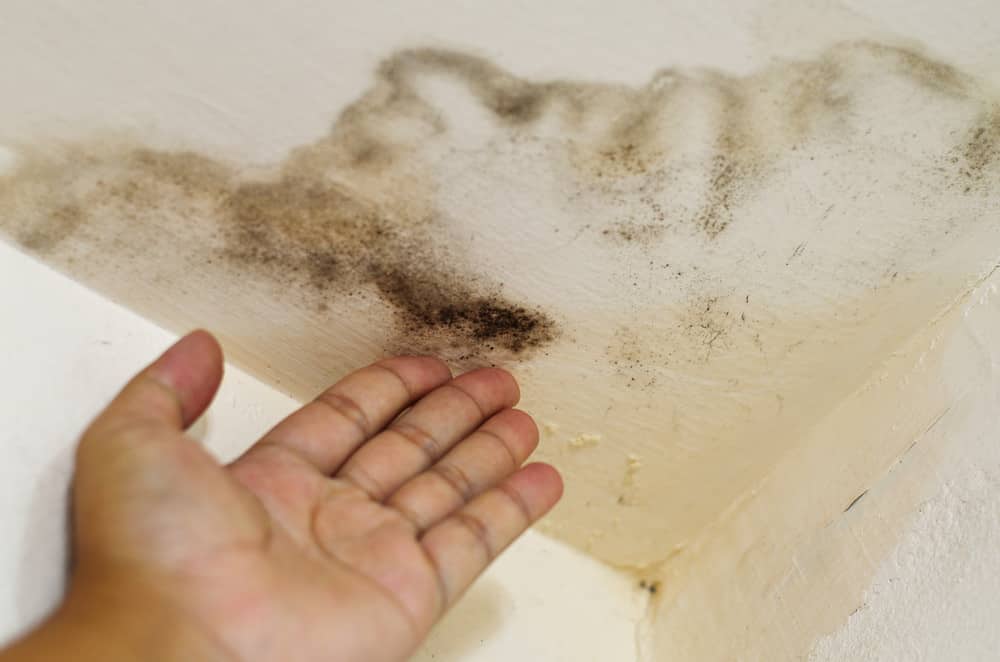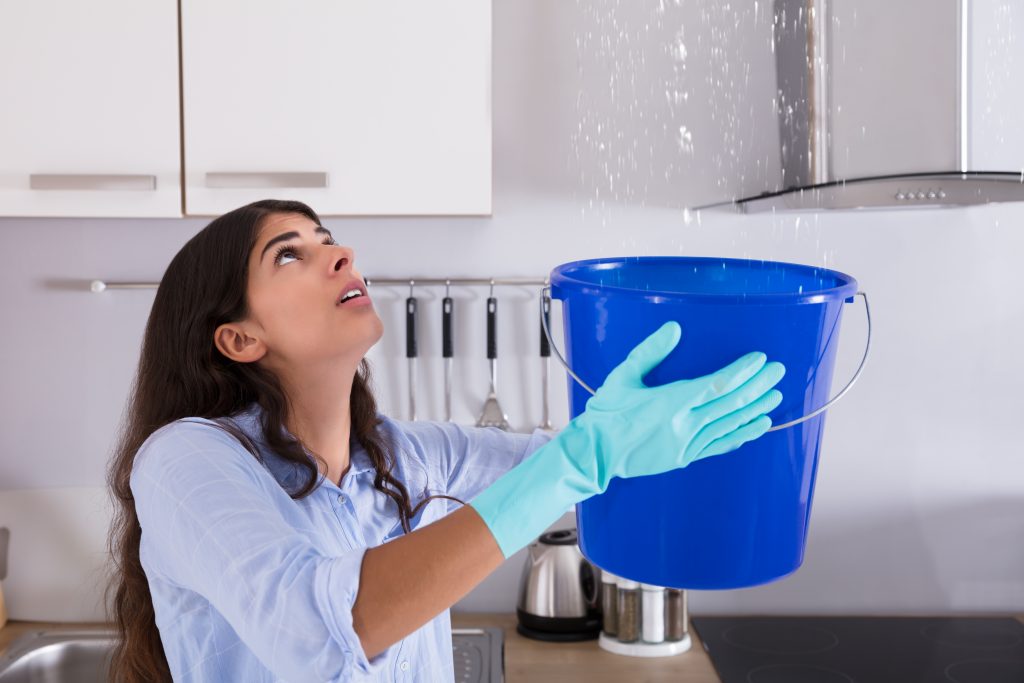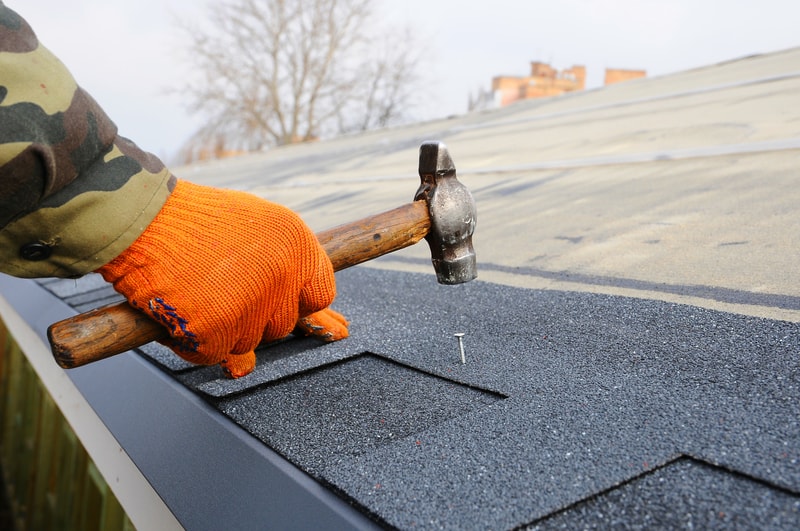A roof leak is no joke. If left untreated, a leaking roof can cause serious issues in your home over time. As soon as you spot signs of a roof leak, it’s imperative that you take action immediately.
In other words, you need an emergency roof leak repair. This comprehensive guide gives you all the information you need to know in every situation where you need an emergency roof leak repair.
Dangers of Roof Leaks
A leaking roof almost always requires immediate response on account of the threats they pose to you and your home. Here are the dangers of roof leaks you most definitely want to avoid.
Structural Damage
When water is allowed to infiltrate the roof over a long period, it can cause long-term damage to the wooden structure of your home. Wood has a tendency to rot when moisture regularly comes in contact with it, causing further damage to the roof’s rafters, house framing, fascia boards, and joists — just to name a few. This, of course, leads to structural damage, which could cause your home to collapse under its own weight.
Mold and Mildew Buildup
Roof leaks can cause water to get trapped in the confined spaces of your home, including the attic, the floor’s undersides, or the spaces behind the walls.
Mold and mildew not only cause structural damage to your home, but they can also compromise your health. Allow them to take root and they can develop into black mold, which could lead to health issues such as allergies, asthma, nosebleeds, chronic fatigue, and many other side effects.
Fire Hazard
Everybody knows what happens when water comes into contact with electricity, right? So by the same logic, you’d be wise to ensure that the electrical wires in your home don’t get wet. Sure, most electrical wires are protected by junction boxes or insulation, but they can only provide protection to a certain extent. If you allow moisture to have its way with the electrical wires and circuits in your home, sparks and electrical fires are bound to happen.
To be on the safe side, you must turn off electrical switches at the earliest sign of a roof leak before calling a roofing contractor to find the source of the leak and have it fixed.
Slips and Falling Accidents
Another frustrating thing about roof leaks is that they can cause water to puddle on the floor or any flat surface, which could cause the unwary, children and the elderly most of all, to lose their footing and become injured or worse. Also, if you own a business establishment and someone slips on the floor and gets injured, you run the risk of facing legal action. Given that they’re flat, flat roofs tend to leak more often than traditional ones – here’s how they’re repaired.
Causes of a Roof Leak
As the old adage goes, prevention is better than cure. But before you can prevent roof leaks, you need to know why they happen in the first place. Here are the common reasons why a roof may start leaking.
Your roof is old
Any type of roof, no matter how durable, deteriorates over time. While keeping your roof well-maintained can extend its lifespan, roofing materials are bound to become less effective at keeping water at bay over time. In other words, a roofing system can only take so much abuse. Shingles may curl up or crack, granules may collect in the gutter and require cleaning, and simple wear and tear may cause structural issues. You’ll definitely know when your roof has overstayed its welcome. By then, the best course of action is to install a new roof.
Drainage issues
Dirt and debris, once they build up, can block your roof’s gutters or clog the roof’s drains. This causes water to puddle in specific areas of the roof, causing pressure to build up over time. Once the accumulated pressure builds up, the water can leak into the weakest area surrounding it, resulting in a roof leak.
Damaged Flashing
Roof flashing are tar-reinforced strips of metal that are installed under shingles and on roof joints. What they do is serve as an extra barrier that prevents water from invading your home’s interior.
There are numerous ways for flashing to get damaged. Usually, the tar that sealed them together just wear off over time. The coating overtop may also crack or curl up, exposing the material to wind and rain. Leave it exposed long enough and the water will eventually seep through the roof.
Broken Shingles
This cause is perhaps the easiest to spot. Simply go to the rooftop and find missing or broken shingles by looking for discolored areas on the roof. Doing that may not be necessary if you find the missing or broken shingle in the yard or garage after a heavy storm or a typhoon. You should also be looking out for black streaks or stains on your roof, and have them addressed.
Condensation in the attic
Condensation in the attic can cause moisture to accumulate over time. Not only can it cause roof leaks, but it can also damage the structural integrity of your home. To prevent attic condensation, keep your attic dry at all times. You can also use a dehumidifier to keep the attic’s humidity in check.
Cracked vent pipes
If you see water stains on your ceiling, you need to check if there are leaks around your vent pipes or roof vents. Roof vents are devices made of plastic and/or metal that regulate the circulation of air in your home. These vents, however, are often exposed to heat, wind, or cold and may spring leaks over time as a result.

Applying caulk on the cracked portions of the vent may temporarily fix the issue, but replacing the roof vents will be a more permanent solution.
Cracked chimney
The crown at the top of chimneys is prone to cracks when exposed to freezing temperatures on a regular basis. When a chimney cracks, moisture can travel between the chimney and the flue. This causes water to penetrate through the ceiling.
The usual process of emergency roof repairs
A leaking roof almost always requires quick action, especially when the damage occurs during a heavy storm. You don’t want to sit idly by once strong winds rip off a portion of your roof.
As mentioned in a previous section, finding the cause of a leaking roof can be a challenge. When your roof has been compromised in an emergency situation, damage control should be done immediately to minimize damage. As such, you’d do well to call a roofing contractor to carry out emergency roof repairs.
The first thing a roofing contractor would do in an emergency situation is to find the source of the leak. When weather conditions aren’t ideal, the contractor can cover the affected area with an emergency tarp or any other protective covering to keep the water in check. The water also needs to be removed to prevent any pressure build-up that may cause the roof to collapse.
These are but temporary fixes, of course. Once the storm subsides, the roofing contractor can proceed with carrying out permanent fixes.
Roof issues caused by fire are more complicated and dangerous since fire can damage the structural integrity of your home. Before proceeding, the contractor company will have to assess whether it’s safe for their contractors to carry out the repairs.
In cases where the roof has already incurred too many damages, a roofing contractor will most likely suggest having the entire roof replaced.
Another reason why you need to hire roofing specialists for emergency roof leak repairs is that they have the insurance coverage that holds them accountable if something goes wrong during the emergency repair process. Things could go awry in emergency situations, and you’d do well to ensure that your interests are always protected all the way through the process.
What to do while waiting for the roofing contractor to arrive
Here are important tips to keep in mind in every situation that calls for an emergency roof leak repair.
- Don’t panic. As is the case in any emergency situation, panicking is not going to help you. It might even make things worse. If you see signs of a roof leak, calm down and figure out how you can take control of the situation.
- Call a professional roofing contractor. Trying to repair the roof on your own in an emergency situation could cause potential injury. Remember, roofing jobs are dangerous and therefore should be left to professionals.
- Document the damage. Examine the damages and write them down. Take photographs of the affected areas while you’re at it.
- Be wary of storm chasers. Storm chasers are “contractors” who visit affected homes after a storm to offer roofing repair services. They appear legitimate but are in truth scam artists who use cheap materials and perform shoddy work. To avoid getting scammed, always check if the contractor you’re about to hire is licensed.
Temporary Fixes for a Leaking Roof
But what if a roofing contractor isn’t readily available to come to your rescue? You can’t just stand by and do nothing while your leaking roof continues to deal more damage to your property, right?
Below are the temporary fixes you can do while you’re waiting for a roofing contractor to arrive.
The easiest and quickest way to fix a leaking roof temporarily is to cover the affected area with a plastic tarp. Make sure it’s the kind of tarp meant to be used outdoors. Smooth it over the leak to avoid the water from sneaking into the undersides. Drive nails into the edges and seal the nail heads with roofing cement.
Don’t have a tarp? Go check if you have a roofing tape lying around somewhere. If you don’t have one, the home improvement store near you should be able to sell you one. Roofing tape can be applied to the roof deck’s interior or the top floor to minimize the flow of water into your home.
You can also apply roofing cement to seal cracks or holes in your roof. Make sure you have a roofing trowel, a putty knife, or a caulk gun at your disposal for easier and quicker application of roofing cement.
If your shingles are curled up or loose, you can smooth them over by tempering them with a heat gun and sealing them up with roofing cement or any strong adhesive.
Once these temporary fixes are done, continue monitoring the affected area for any leaks and address them accordingly.
How to Stop a Roof Leak in the Rain
Doing temporary fixes may sound easy, but we haven’t discussed yet the trickiest part: stopping a roof leak during a heavy downpour.
If your roof starts leaking during heavy rainfall, then you most definitely have an emergency in your hands. If you don’t take immediate action, the water can seep through the roof and start soaking the ceiling. If left unattended for hours, the drywall might start to deteriorate and crumble. Not a pretty sight.
Obviously, you need to find a way to stop the leaks. Before you do, here are the first steps you need to take:
- Do the old bucket technique. Grab one and put it under the spot where the drip is coming from. Make sure you have another bucket ready so you can use it immediately once the first bucket needs to be emptied. The bigger the bucket, the better, especially when the water is coming on too fast.
- Get rid of moisture or any standing water in your home. Grab an old towel or any tool you can use to get rid of water.
- Move any valuable items to an area where water is unlikely to reach them.
- Put old clothing or tarp on the floor to prevent water from making contact with your carpet or hardwood floors causing water damage.

Finding the Source of a Leaking Roof
The first important step in stopping a roof from leaking is to find the source of the leak. Unfortunately, this part is not as easy as it sounds. Water has a habit of taking the path of least resistance, so the source of the leak isn’t likely to be directly above the spot where the drips in the ceiling are coming from.
It’s also possible that the leak source is not on the roof but in the other parts of the home. The leak could have been caused by an HVAC system, a pest infestation, or clogged gutters.
You can’t go wrong by starting with the attic since it’s right below the pitched roof. Make sure to grab a flashlight and a container when you go there. Some dust or debris or even mold may have accumulated in the attic so it’s advised that you wear an eye protector as well.
Using a flashlight, trace the path of the moisture until you find the leak’s entry point. If you’re unable to find it, you can also trace the source by examining signs of mold, water stains, or drips along the underside of the rafters, the roof deck, or the sheathing.
My Roof is Leaking: Who Do I Call?
As already mentioned, the best course of action to take when your roof is leaking is to call a roofing contractor. But don’t hire just any contractor. Hire a roofing contractor that is fit for the job. Remember, this is your roof we’re talking about. Hire the wrong person and you run the risk of losing out on your investment.
Below are essential tips that can help you find the right roofing contractor.
- Check for contractor licensing and insurance status. Most states require roofing contractors to get the appropriate licensing before being allowed to apply their trade. You need to ensure that the contractor you’re hiring is licensed not just because it’s required by law, but also because it provides a guarantee that you’re going to receive quality work.
A licensed contractor should be able to present proof of insurance coverage. Without insurance, you run the risk of paying for damages if a contractor or subcontractor gets injured during the project. Hiring a licensed contractor also ensures that your assets are protected if the company doesn’t fulfill their end of the bargain as has been stated under the contract.
- Hire a contractor that offers an extensive warranty. Without a warranty, any shady contractor can take advantage of a homeowner by using cheap materials, cutting corners, or performing poor work. Homeowners aren’t likely to notice the poor workmanship until a few years later. Hiring a contractor who offers an extensive warranty ensures that you’re not getting the short end of the stick in the deal.
Getting Free Quotes from 24 Hour Emergency Roof Repair Companies Near You
The best time to prepare for any emergencies is before they actually happen. By following all the tips mentioned in this comprehensive guide, you should be well-equipped to handle the situation as soon as you see a leaky roof threatening to damage your home.
Whatever your circumstances, the best course of action is to call a roofing contractor who can respond immediately if you need emergency roof repairs. As such, it’s extremely important that you already have a list of contractors you can trust and call at a moment’s notice. Finding good candidates is not easy, not to mention time-consuming and costly.
We understand the struggle all too well, so we gathered quotes from screened roofing contractors who can perform emergency roof repairs near you. Just fill out the form on our site and you’ll get these quotes completely FREE of charge!
